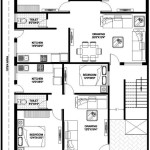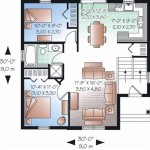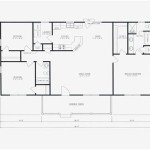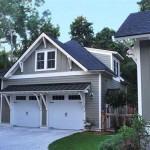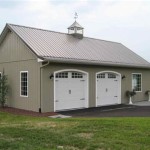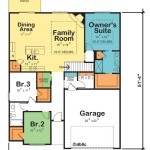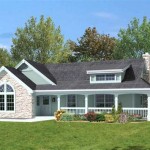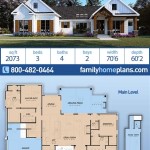25 Feet Wide House Plans: Optimizing Space and Design
The design and construction of a house within a 25-foot width presents unique challenges and opportunities. These constraints necessitate a focus on efficient space utilization, strategic layout planning, and thoughtful design choices. Often, homeowners and builders face the task of maximizing living area while adhering to local building codes and aesthetic preferences. This article explores key considerations and approaches to developing effective 25-foot wide house plans.
Designing a house within a narrow width requires meticulous planning. It's crucial to consider factors such as lot orientation, surrounding structures, and the desired functionality of each room. The primary goal is to create a comfortable and functional living space that feels spacious and inviting, despite the limited width.
Understanding the Constraints and Opportunities
The 25-foot width profoundly impacts the architectural design and interior layout. Understanding these limitations is the first step in developing a successful house plan. The primary constraint is the reduced flexibility in room placement and dimensions. This can affect the size and configuration of living rooms, bedrooms, kitchens, and bathrooms. However, this constraint also presents opportunities for innovative design solutions. For example, vertical space can be maximized through the use of multiple stories, high ceilings, and loft areas. Open-plan layouts can also create a sense of spaciousness by eliminating unnecessary walls and visual barriers.
One of the initial considerations is the zoning regulations in the area. These regulations often dictate setbacks, building height restrictions, and permissible lot coverage. These rules can further restrict the buildable area on a given lot. Therefore, a thorough understanding of local zoning ordinances is paramount before embarking on the design process. The allowable building height and the number ofStories permitted will directly influence the overall square footage that can be achieved. Similarly, setbacks from property lines will determine the precise buildable width and length of the house.
Beyond zoning, easement considerations can also impact the usable space. Easements are legal rights granted to others to use a portion of the property, such as for utilities or access. These easements must be factored into the building plan to avoid encroaching on restricted areas. This highlights the importance of a detailed site survey prior to finalizing the design.
Another critical aspect is the orientation of the lot. The direction the house faces impacts the amount of natural light received throughout the day. Optimizing the placement of windows and doors to maximize sunlight can significantly enhance the livability of the home. In colder climates, orienting living spaces towards the south can leverage passive solar heating to reduce energy consumption. Conversely, in hotter climates, shading strategies may be necessary to mitigate excessive heat gain.
Optimizing the Interior Layout
Efficient space utilization is paramount when designing a 25-foot wide house. The interior layout should prioritize functionality, flow, and a sense of openness. Open-plan living areas, strategic use of natural light, and clever storage solutions are all crucial elements.
Open-plan layouts are particularly effective in narrow homes. By combining the living room, dining area, and kitchen into a single, interconnected space, the visual barrier of walls is removed. This creates a more expansive and airy feel. Thoughtful furniture placement and the use of area rugs can help define distinct zones within the open space without compromising the overall sense of openness. Large windows and sliding glass doors can further enhance the connection to the outdoors, blurring the lines between the interior and exterior.
Strategic use of natural light is also critical. Large windows, skylights, and light wells can bring daylight deep into the interior, reducing the reliance on artificial lighting. Window placement should consider privacy, solar gain, and views. Tall, narrow windows, located high on the walls, can provide ample light while maintaining privacy from neighboring properties. Skylights can be particularly effective in bringing light into interior spaces that may not have access to exterior walls. Light wells can be used to illuminate lower levels, such as basements or finished crawl spaces.
Storage solutions are essential in maximizing usable space. Built-in shelving, under-stair storage, and multi-functional furniture can help keep the home organized and clutter-free. Vertical storage, such as floor-to-ceiling cabinets and shelves, can maximize storage capacity without taking up valuable floor space. Consider incorporating storage into unconventional spaces, such as above doorways or within window seats. Integrated storage solutions are preferable over freestanding cabinets, as they tend to blend seamlessly with the architecture and minimize visual clutter.
Circulation patterns should be carefully considered to ensure ease of movement throughout the house. Hallways should be kept as narrow as possible to avoid wasting valuable space. In some cases, hallways can be eliminated altogether by designing rooms to flow directly into one another. A well-planned layout will minimize the need for long corridors and create a more efficient use of space.
Architectural Styles and Design Considerations
The architectural style of a 25-foot wide house can be adapted to various aesthetics, ranging from contemporary to traditional. However, certain design elements are particularly well-suited to narrow homes. These include vertical emphasis, clean lines, and simple roof forms.
Vertical emphasis can visually elongate the house, making it appear taller and more imposing. This can be achieved through the use of tall windows, vertical siding, and strong vertical elements such as columns or pilasters. The choice of materials and finishes can also contribute to the vertical emphasis. For example, vertically oriented wood siding can accentuate the height of the house. Similarly, tall, narrow windows can draw the eye upwards, creating a perception of greater height.
Clean lines and simple roof forms are generally preferred in narrow homes. Complex rooflines can add visual clutter and detract from the overall sense of spaciousness. Simple gable or shed roofs are often the most efficient and cost-effective options. Clean, minimalist architectural styles, such as modern or contemporary designs, tend to work well with narrow houses due to their emphasis on simplicity and functionality. These styles often feature large windows, open floor plans, and a lack of extraneous ornamentation.
Exterior materials and color palettes should be carefully chosen to enhance the curb appeal of the house. Lighter colors can make the house appear larger and more inviting. Contrasting trim colors can highlight architectural details and add visual interest. Durable and low-maintenance materials are often preferred, especially in urban environments. Brick, stone, and fiber cement siding are all popular choices for exterior cladding. The choice of landscaping can also significantly impact the curb appeal of the house. A well-designed landscape can enhance the architectural style of the house and create a welcoming entry.
Beyond aesthetics, sustainable design principles should also be integrated into the house plan. This includes maximizing energy efficiency, using sustainable materials, and minimizing water consumption. Energy-efficient windows and doors, proper insulation, and high-efficiency HVAC systems can significantly reduce energy bills. Sustainable building materials, such as bamboo flooring and recycled content countertops, can minimize the environmental impact of the construction. Water-saving fixtures and drought-tolerant landscaping can reduce water consumption. Integrating sustainable design principles not only benefits the environment but also enhances the long-term value and livability of the house.
Careful consideration of interior design is also crucial for maximizing the perceived space. Opting for lighter color palettes on walls and furniture can reflect light and make the space feel more open and airy. Mirrors strategically placed can create the illusion of a larger room. Multi-functional furniture, such as sofa beds and storage ottomans, can serve multiple purposes. Reducing clutter and maintaining a minimalist aesthetic can also contribute to a more spacious feel. Wall-mounted televisions and shelving units can free up valuable floor space.
Ultimately, the success of a 25-foot wide house plan hinges on a careful balance of architectural design, interior layout, and sustainable principles. Through thoughtful planning and innovative design solutions, it's possible to create a comfortable, functional, and aesthetically pleasing living space, despite the spatial constraints.

25 Wide Cottage With 3 Bedrooms And A Rear Access Garage 521009ttl Architectural Designs House Plans

25 Foot Wide 3 Bed Transitional House Plan 300021fnk Architectural Designs Plans

25 Foot Wide Two Story House Plan Under 2000 Square Feet With 3 Bedrooms 69815am Architectural Designs Plans

Pin Page

House Plan For 25 Feet By 53 Plot Size 147 Square Yards Gharexpert Com

25 Wide Duplex House Plan 3 Bedrooms 2 Bathrooms With Garage

25 Feet Wide Modern House Design At Rs 7 Square In Chittorgarh Id 2851309002991

Homes With 25 Feet Width Modern Style House Plans Home Builders Small

26 Foot Wide Modern Farmhouse Under 2000 Square Feet

25 Feet Wide Modern House Design At Rs 7 Square In Chittorgarh Id 2851309002991

